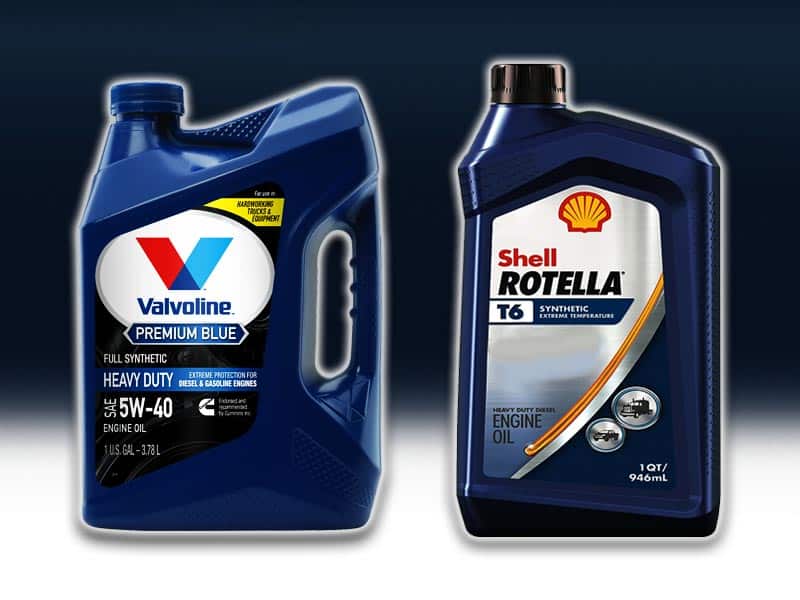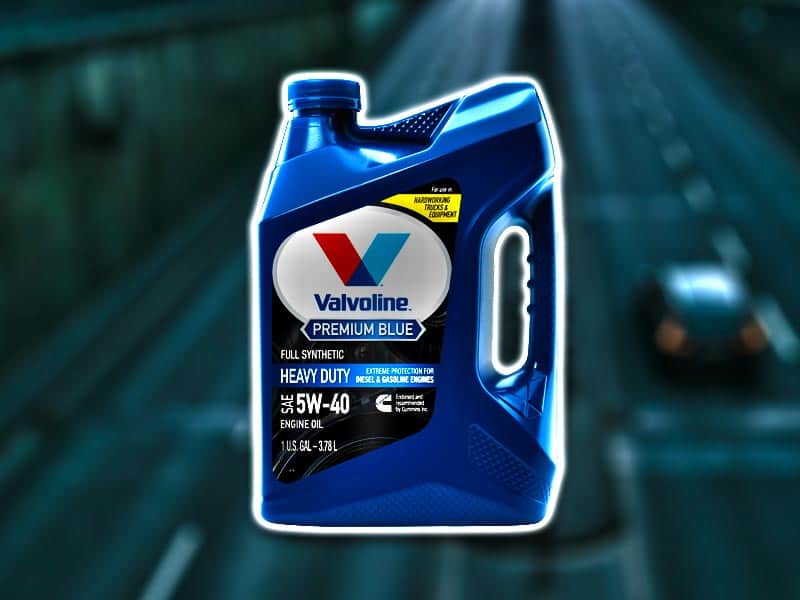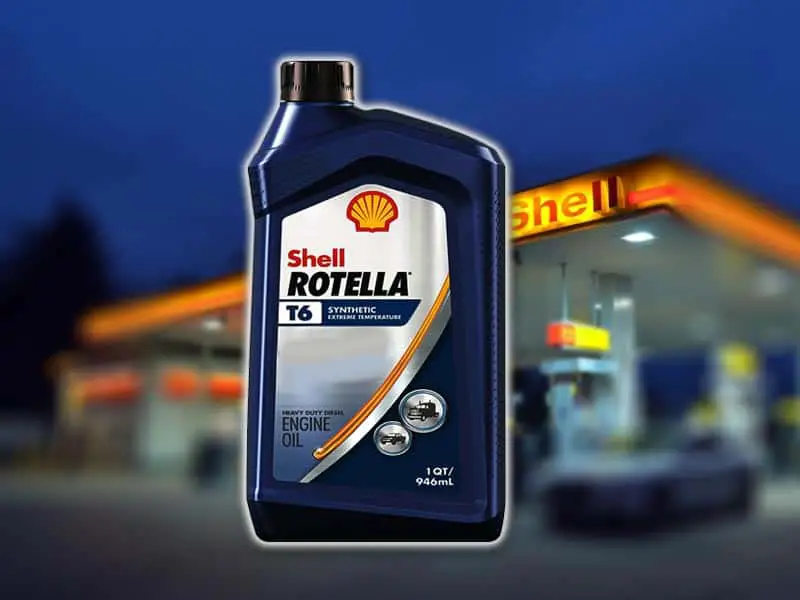Both of the engine oils are specially formulated for heavy-duty diesel engines. They are made from superior synthetic base stock (group IV) and advanced additives.
They would deliver better durability of the emission control system of engines since they meet the API CK-4 standard.

They are compatible with diesel particulate filters since both of them meet the ACEA E9 standard.
Valvoline Premium Blue Extreme is the only heavy-duty oil that is being recommended by Cummins Inc. It is also suitable for diesel engines with Exhaust Gas Recirculation (EGR).
It delivers astonishing deposit and wear protection to the engines. It provides superior fuel economy as well.
Shell Rotella is being designed with Triple Protection Plus technology to provide ultimate wear protection and prevent oil breakdown in extreme weather conditions. It provides unparalleled oil flow in cold weather and prevents the thermal breakdown of the engine oil in high-temperature conditions.
Check out the Comparison: Rotella T4 vs T5 vs T6
Table of Contents
Side By Side Comparison:
| Specifications | Valvoline Premium Blue Extreme | Shell Rotella T6 |
| Oil Type | Full Synthetic | Full Synthetic |
| Engine Type | Diesel | Diesel |
| Available viscosity grades | SAE 5W – 40 | SAE 0W – 40, SAE 5W – 40, SAE 15W – 40 |
| ILSAC | GF-5 | GF-5 |
| API | CK-4 | CK-4 |
| Oil change interval (miles) | 10,000 to 15,000 | 10,000 to 12,000 |
| Additives | Anti-wear additives, Cleaning agents, anti-oxidants | Anti-wear additives, Cleaning agents, anti-oxidants, pour point depressants |
| ACEA | E9 | E9 |
Viscosity Comparison
Kinematic Viscosity can be defined as the resistance of engine oil to flow divided by its density at a certain temperature. Valvoline is more resistant to flow at both high and low temperatures since its kinematic viscosity is relatively high.
Viscosity index is a unitless ratio that defines the effect of temperature change on the kinematic viscosity of engine oil. The lesser the viscosity index, the more change will arise in the kinematic viscosity of oil due to temperature change. By that law, we can clearly state that Shell will get a comparatively low impact in its kinematic viscosity due to temperature change.

Below a certain temperature, engine oil loses its capability of flowing and that is known as the pour point. Valvoline has a comparatively low value of pour point, so it would freeze before its competitor. Shell is a very good choice in cold weather conditions.
| Parameter | Valvoline Premium Blue Extreme 5W – 40 | Shell Rotella T6 5W – 40 |
| Kinematic Viscosity at 40o C | 95.1cSt | 90 cSt |
| Kinematic Viscosity at 100o C | 15.3 cSt | 14.9 cSt |
| Viscosity Index | 171 | 174 |
| Pour Point | -39o C | -51o C |
Oil Change Frequency Comparison
Due to oxidation, combustion, and other chemical reactions that happen inside an engine, many kinds of acids get formed which are harmful to an engine’s health and performance.
Many additives in engine oil are alkaline-based solely for the cause of neutralizing these acids. But which engine oil would be able to neutralize more acids relies upon its Total Base Number (TBN).
And once an engine oil runs out of its neutralizing ability, it is needed to be drained and hence we see a direct affiliation between TBN and oil change interval.

By the tested data given below, it is clear that Shell will be drained soon and its oil changing frequency would be high since its TBN is much lower than its opponent. Valvoline would have low oil change frequency than its competitor since its TBN is relatively high.
| Parameter | Valvoline Premium Blue Extreme 5W – 40 | Shell Rotella T6 5W – 40 |
| Total Base Number | 11 mg KOH/g | 10.2 mg KOH/g |
Minimizing Engine Wear-Off
Due to heat up, inappropriate operation, and more friction between the engine’s moving components, wear-off occurs. Since the situation is unavoidable, engine oil manufacturers came up with the key of adding anti-wear additives in it. Zinc, phosphorous, boron, and molybdenum are widespread anti-wear additives in the industry. Their quantity in an engine will determine its wear protecting ability.
By analyzing the tested results, we can conclude that Valvoline contains a slightly high amount of collective anti-wear additives in it. Even though Shell lacks behind in this regard, its wear protection ability is remarkable as well.
| Additive | Content in Valvoline Premium Blue Extreme 5W – 40 (ppm) | Content in Shell Rotella T6 5W – 40 (ppm) |
| Zinc | 1287 | 1264 |
| Phosphorous | 1113 | 1147 |
| Boron | 68 | 69 |
| Molybdenum | 104 | 59 |
Catalytic Converter Performance
Zinc and phosphorous are two major anti-wear additives which help in minimizing the friction between moving components of an engine. But their disadvantage is that during high-temperature conditions, they form zinc and phosphorous ash which affects the performance of catalytic converters. Their amount in engine oil is directly proportional to the amount of ash formation.
By examining the tested data given below, we can conclude that both of the contenders will produce almost the same amount of ash in the engine.
| Engine Oil | Concentration of Zinc (ppm) | Concentration of Phosphorous (ppm) |
| Valvoline Premium Blue Extreme 5W – 40 | 1287 | 1113 |
| Shell Rotella T6 5W – 40 | 1264 | 1147 |
Reduction of Sludge build
At high-temperature conditions, sludge formation happens due to the breakdown of base oil and its chemical reaction with either coolant gases, moisture, or contamination of the engine. Magnesium, sodium, and calcium are most commonly added to lubricants as cleaning detergents. Their amount in an engine oil defines the cleansing ability of that engine oil.
It is apparent from the tested data given below that Valvoline contains a high concentration of calcium in it, as its focal cleaning agent, and surpasses its opponent in this competition.
| Additive | Content in Valvoline Premium Blue Extreme 5W – 40 (ppm) | Content in Shell Rotella T6 5W – 40 (ppm) |
| Magnesium | 769 | 1187 |
| Sodium | 11 | 4 |
| Calcium | 2041 | 833 |
Oil Burn-off protection
Whenever an engine oil comes into a state of high temperature, it evaporates and gets burned depending upon its two major parameters; volatility, and flashpoint. The volatility of an engine oil defines how easily it gets evaporated, and the flashpoint defines the definite temperature above which the engine oil would burn up if provided with an ignition source.
By observing the tested result given below, we can state that Valvoline would burn up more rapidly than its competitor. While Shell would be the best choice in a hot environment since its flash point is higher than its competitor.
| Parameter | Valvoline Premium Blue Extreme 5W – 40 | Shell Rotella T6 5W – 40 |
| Flash Point | 207 o C | 233 o C |
Summary
- Both the contenders are fully synthetic and made from group IV base oil and advanced additives.
- Both would impact the catalytic converter on the same level.
- Valvoline will provide better cleansing than its competitors.
- In a hot and cold environment, Shell would perform comparatively better.
- Both of them have pretty good wear protection ability but Valvoline is slightly better than Shell.
- The viscosity of Shell will be less affected due to temperature change.
- Valvoline will lose its flowing capability much quicker than its opponent due to having a low pour point.
- Oil change frequency of Valvoline will be lower than its opponent.
- Valvoline is costlier than its rival.
